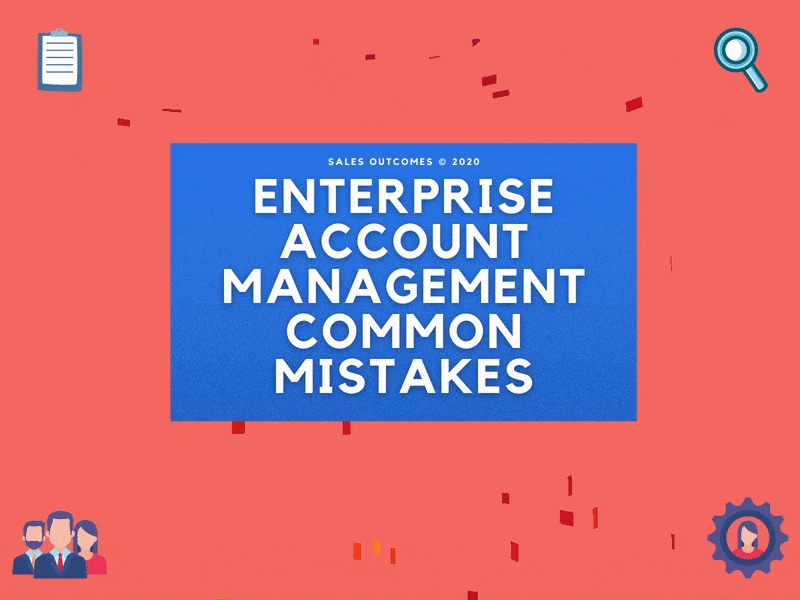Enterprise Account Managers who struggle to grow and retain revenue make three common mistakes that increase customer churn and prevent the realization of the full potential of the relationships they manage.
Enterprise Account Management Three Common Mistakes
- They Are Unable to Transition From Tactical to Strategic Sales Motions
- It’s Easier to Be Reactive Than Proactive
- Assuming that Others Understand the Client as Well as They Do
1. Unable To Transition From Tactical To Strategic Sales Motions
While it’s important for account managers to be responsive to tactical customer asks, fulfilling requests without digging deeper can inhibit growth and retention.
Strategic account managers should leverage tactical customer asks as an opportunity to explore, question, and understand the what and why that is driving the requests. Often, customers don’t know what they want — or they know what they want, but they don’t know the most effective way to achieve what they want.
If an account manager can extract the strategic thinking behind customer requests, they have a chance of presenting big ideas to deliver value. That helps the account manager shift from the status of the vendor to a trusted advisor.
Shifting from tactical to strategic motions often requires challenging customer thinking or presenting options they may not have considered. Making the time to uncover the what and why behind customer asks and explore the strategy more fully is the key to drive organic growth through large, strategic opportunities.
2. It’s Easier To Be Reactive Than Proactive
Reactive enterprise account managers encounter unwelcome surprises when they don’t stay ahead of the knowledge curve, whether it’s about the customer, competitors, or the customer’s industry.
Proactive motions require more than regular contact. Strategic priorities can shift; leadership changes occur; competitive actions may demand countermeasures, and the market place is always changing. Account managers can’t afford to wait for their customers to come to them with a challenge. Instead, they should be looking ahead, anticipating trends, and preparing for opportunities to prompt meaningful and strategic conversations that extend beyond the current solution set.
The pandemic is an excellent example of reactivity vs. proactivity. During the initial few weeks, there was no choice but to react as quickly. However, as we settle into the new normal, proactivity is essential for account managers that want to help customers navigate the difficult road ahead.
3. Assuming that Others Understand the Client as Well as They Do
Enterprise accounts engage the breadth and depth of your organization’s resources. Galvanizing and aligning the resources responsible for servicing and growing the account is challenging under the best of circumstances. To that end, it’s unlikely that the organization will know or appreciate the customer’s needs and objectives without a structured direction from the account manager.
The best way to foster alignment is to create a good account plan that synthesizes plan objectives, milestones, tactics, and action items to stimulate growth and retention.
Account plans help answer the question: “What do we do next?” They build and sustain momentum as you tackle short and long-term initiatives, keeping teams focused on “the prize” even as they manage day-to-day execution.
Conclusion:
All account managers have goals to grow and retain revenue. Even if the goals are clear, it can be less clear how to achieve them — and all too easy to fall into one of the three mistakes above.





